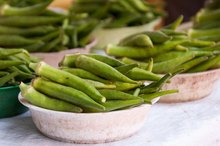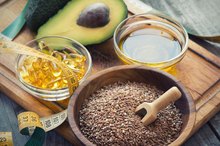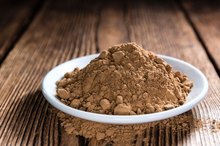Side Effects of Polydextrose
Polydextrose is a synthetic food additive. Acting as as a bulking agent to enhance the taste of reduced-calorie foods, polydextrose is commonly used as a substitute for sugar, starch and fat in many commercial food products. It is also used as a means to increase the fiber content of many products, and is often classified as fiber on nutrition labels. While it is generally well tolerated, there are possible side effects to be aware of before consuming this additive.
Side Effects
Polydextrose is generally well tolerated in those who use it in moderation. However, in large quantities or in particularly sensitive people, polydextrose can cause a variety of side effects, including abdominal cramping, bloating and excessive gas. Those who are newly integrating polydextrose into the diet should begin with small amounts, as new users may experience a laxative effect. In fact, according to the Center for Science in the Public Interest, if a food product has more than 15 grams per serving, a laxative-effect warning is required on the label 1.
- Polydextrose is generally well tolerated in those who use it in moderation.
- Those who are newly integrating polydextrose into the diet should begin with small amounts, as new users may experience a laxative effect.
Commercial Uses
List of Foods Containing High Fructose Corn Syrup
Learn More
Synthesized from dextrose, sorbitol and citric acid, polydextrose is used in a wide range of commercial food products for a variety of purposes. Used as a humectant, polydextrose helps keep foods moist. As a stabilizer, thickener or bulking agent, it helps keep flavor and texture uniform in packaged foods. Polydextrose is also added to low-fiber foods such as yogurt, puddings, ice creams, cookies and diet drinks to raise the amount of fiber in these products. Polydextrose is slightly sweet and very low in calories, making it highly valued in commercial circles to replace high-calorie food ingredients without compromising taste and texture.
- Synthesized from dextrose, sorbitol and citric acid, polydextrose is used in a wide range of commercial food products for a variety of purposes.
- Polydextrose is slightly sweet and very low in calories, making it highly valued in commercial circles to replace high-calorie food ingredients without compromising taste and texture.
Polydextrose and Weight Loss
Products containing polydextrose have become widely used in various weight-loss plans. Despite being synthesized from corn sugar, polydextrose has only 25 percent of the calories of regular table sugar. Polydextrose is a carbohydrate, but since it passes through the intestine with minimal absorption, it has little effect on blood-sugar levels. Since it travels through the system largely undigested, it adds bulk to low-calorie or low-fat foods, adding a feeling of fullness when such foods are consumed, aiding in portion control.
- Products containing polydextrose have become widely used in various weight-loss plans.
- Polydextrose is a carbohydrate, but since it passes through the intestine with minimal absorption, it has little effect on blood-sugar levels.
Polydextrose and Diabetes
Canderel Side Effects
Learn More
Polydextrose has shown benefits in the control of blood-sugar levels when used in the diets of those with type 2 diabetes 2. According to a study published in the 2009 "Pakistan Journal of Medical Sciences," the use of polydextrose significantly reduced blood-glucose levels in subjects with type 2 diabetes, as well as lowering LDL cholesterol, triglyceride, lipoprotein and blood-pressure levels 2.
Polydextrose as a Fiber Supplement
Polydextrose is made up of 90 percent soluble fiber, according to the "Pakistan Journal of Medical Sciences." It is not digested in the upper GI tract, and partially ferments in the lower GI tract, making polydextrose beneficial to digestive health in much the same way as natural fibers. It promotes the growth of beneficial bacteria in the intestine and increases fecal bulk, among other benefits, improving GI function.
Related Articles
References
Writer Bio
Melinda L. Secor left a 20-year career in health care and developmental disabilities to become a full-time freelance writer. In addition to blogging regularly, she writes for numerous websites on a wide range of topics that include politics, finance, homeschooling, parenting, sustainable living/self sufficiency, health, developmental disabilities, gardening and many others.









